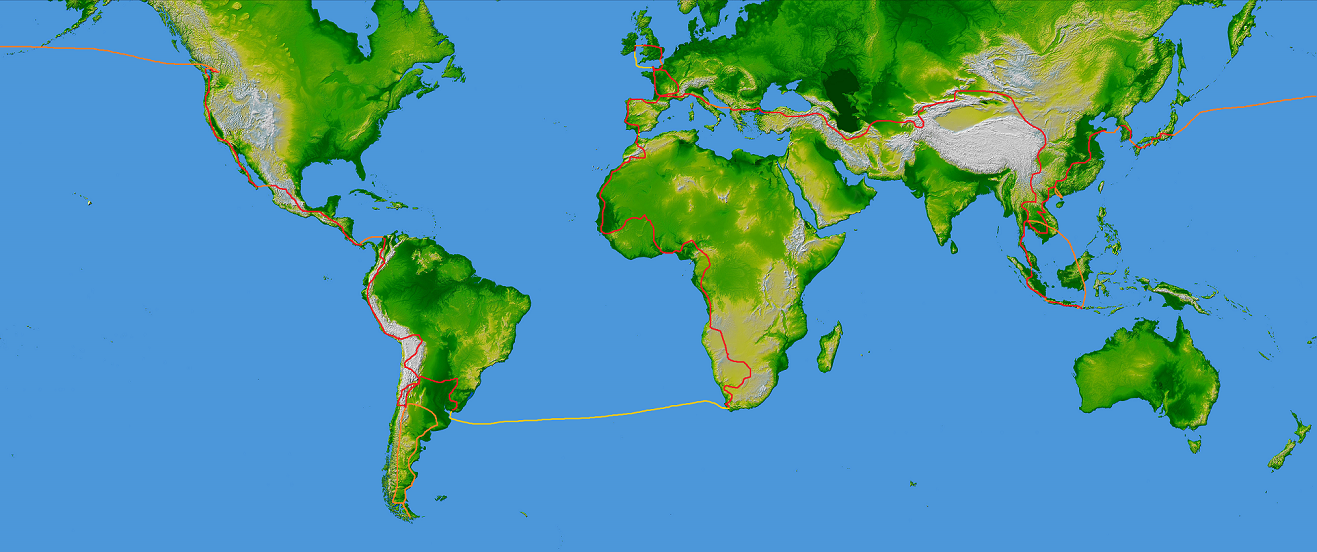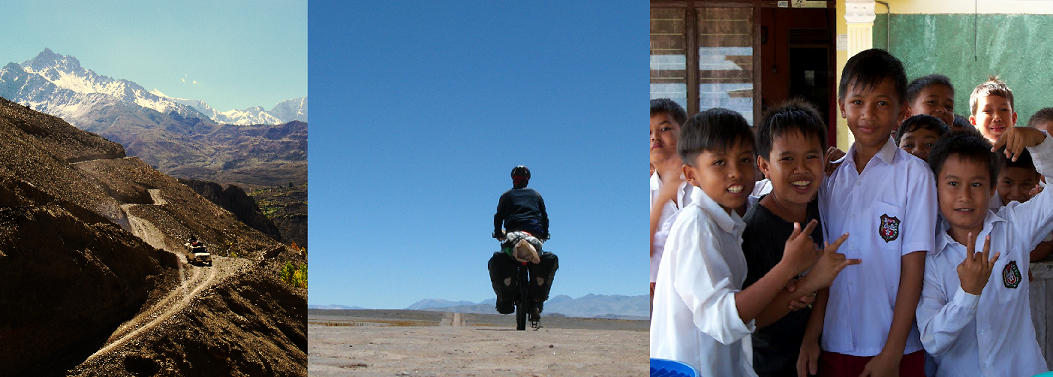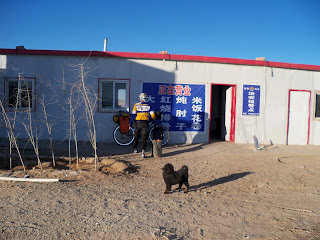Almost 700 km of desert lay ahead of us after we passed through the Great Wall leaving Jiayuguan. The old 312 and the new G30 motorway diverge from the railway line and after straying west to Anxi and Guazhou, they bear north-west across the Bei Shan mountains before descending again to the ancient oasis of Hami. Lying on the edge of two great deserts - the Gobi to the east and the Taklamakan to the west, the new motorway connects distant Beijing and China's heartland with its western regions and the northwest capital of Urumqi. Previously the Uighur population predominated until the recent migration of Han Chinese to the region diluted the ethnic pool. More on that later perhaps.
Back on the highway in western Gansu we spent two days struggling along the old 312, battling headwinds and a road that had often ceased to exist in all but name as the construction of the western high-speed train line has involved the removal of much of the old road. Trucks threw up tremendous amounts of sand that combined with the headwind made for choking conditions at times and pretty miserable cycling. By the third day we decided to follow the advice of Sam, a cyclist we met a week back, and get on the G30 to Anxi. With a tailwind we were eating our morning noodles by midday with a 100 km on the clock. We had found our spirit of the desert again. After Anxi, the 312 disappeared into sand piles and one look at it and we were scrambling back over the barbed wire fences onto the highway. The advantage of having to ride the motorway is that you have a wonderful surface and a lane (the shoulder) to ourselves. Colossal trucks rumble past and provide a bulwark against headwinds and its easy to find a camping spot in an underpass or drainage tunnel, as the highway is sealed off from the desert by a fence. On the other hand, supplies are much farther apart than the old road and distances of over 100 km between supply points were commom. Also all the livestock hauliers heading west dump their dead carcasses by the roadside, leaving a foul stench and the sight of bloated, rotting pigs and sheep. PETA could have a field day here. Despite the signs, there's no restrictions to using the highway now that the old 312 road has been carved up, although the police pulled up once as we snacked on our extensive biscuit supply and told us to pull off further up the road where it was wider. We also got papparazzi'ed by an unsmiling police photographer at one toll booth.
We couldn't reach Liuyuan service centre on the first evening as we climbed into the Bei Shan (Black Mountains) and after removing all the dessicated turds that previous occupants had left in our evenings abode - an underpass - we had to save our water for drinking and skip breakfast before we made the service area by 10 a.m. the following morning. Lesson learnt about supplies. We are camels once more. We were delighted to find a buffet at the service area, where truckers dove into plates piled high with calorie goodness, unsure of whether to eat their breakfast or look at us eating ours. In between high-decibel conversations, those who had disappeared to the bathroom could be heard hocking up and spitting through their morning abultions. Our neighours were on the baijou (Chinese spirit) and beer already. Hopefully their truck has an autopilot. We left in a headwind, our bikes wobbling under the weight of water. We wouldn't make the provincial border post of Xingxingxia that evening and camped up under an amazing night sky. Finally some darkness and peace in a land where solitude is often hard to find. This is a different China out here. And its back to the basics (and the best parts) of cycling as we pitched up each evening. Anyone for another pack of noodles?
The northern Silk route was a later addition to the more deadly southern one that runs across the southern section of the Taklamakan to Kashgar. By the sixth century, the northern route was preferred despite being longer. From Jiayuguan to Hami would have involved almost a month of trekking through the "howling wilderness" that early 20th century explorers found. Hami today is famous throughout China for its production of over 30 varieties of melon. It's also famous for wine and grape vines struggled against the wind as we rode into town yesterday. We crossed the border into Xinjiang autonomous region two days ago at the remote outpost of Xingxingxia with just a nod from a friendly policeman who surveyed the lines of migrant workers queuing up to get their documents checked.
Two nights ago at over 1900 metres we had all our warm gear on as a very cold northern wind blew down on the Bei Shan, while yesterday I sat sweating in the high noon heat with my second puncture of the morning. Turpan, our next goal, has temperatures in the high 30s as it sits in a synonymous depression over 50 metres below sea level - China's lowest and hottest place. It's a few days barren ride to the capital, Urumqi, from here and it's where we'll pick up our Kazakh visa and begin playing the Central Asia Great Visa Game.
Hami, Xinjiang, PRC
Pedalled: 70,864 km





























